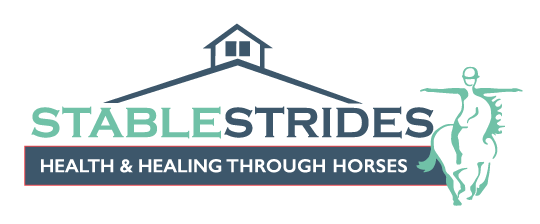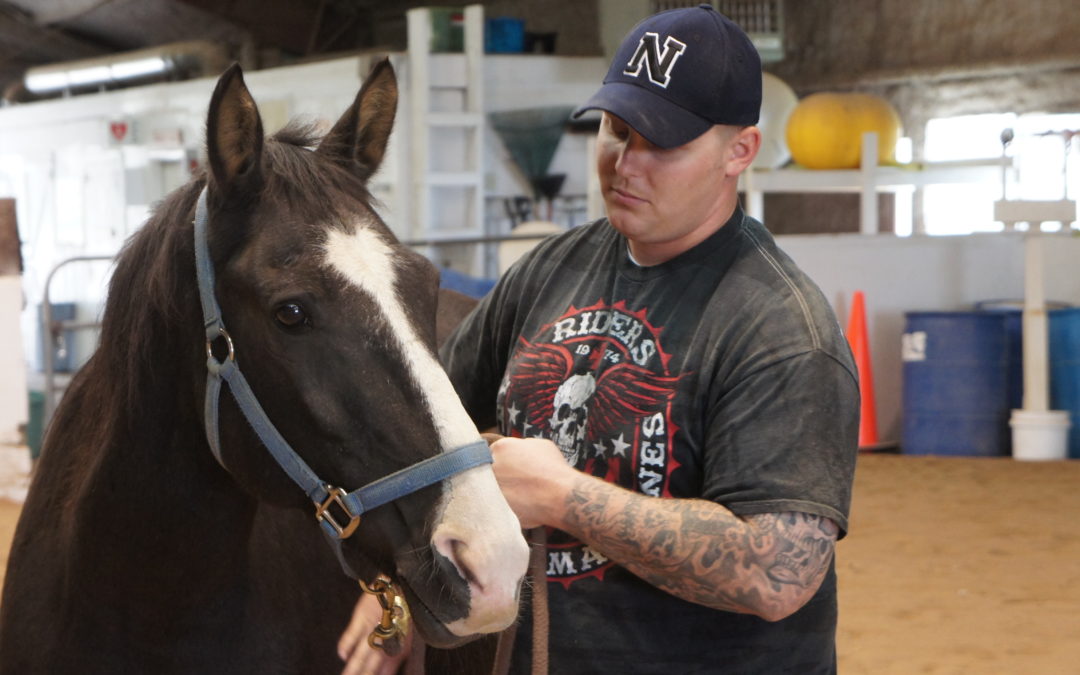By Chester DeAngelis, LCSW, Program Director
“Therapy is sought for a variety of reasons- and should never be met with shame. When someone goes to therapy, however, they expect to see that therapist, and maybe a receptionist. Here at StableStrides, our work is unique. We have a community here because Equine Assisted Therapies present both large benefits, and a bit of risk management to the therapy scene. Because of those factors, we work in teams when providing therapy. We employ what is called the Diamond Model. This model incorporates co-facilitators and the horse in the therapy session. Add the client, and there are four participants in each session (hence, diamond model). Many animal assisted therapies, even equine facilitated psychotherapy, can be conducted using a Triangular Model, where the therapist is also the animal’s handler in the client’s session. That would make it only three participants in each session (again, a triangle).
“We use this Diamond Model for all of our therapies here at StableStrides, whether it’s mental health, physical, occupational or speech therapy (Remember that Adaptive Riding is not a Therapy, but an Activity, as there is no therapist involved.). This model of facilitation has benefits to all involved in the session- which is why we’re passionate about it. It incorporates collaboration and support to the professionals, provides safety and multiple perspectives to the clients, and offers advocacy by a trained eye for the horse.”
Parts 2 (Collaboration Through Multiple Perspectives) and 3 (Becoming the Equine Specialist) are also available.


Recent Comments